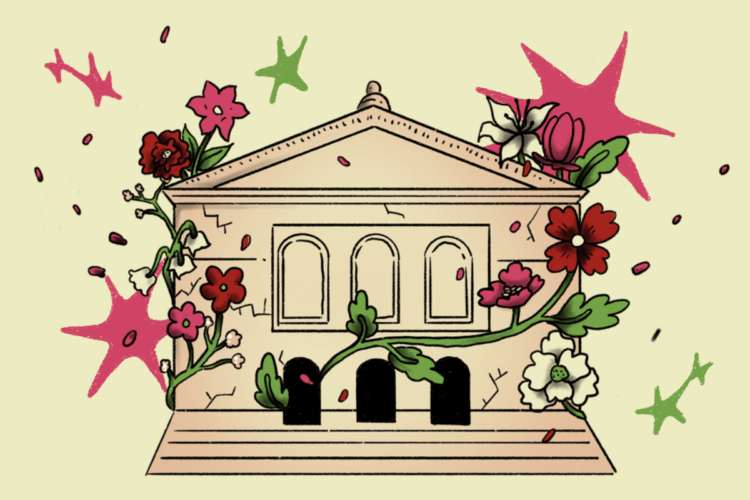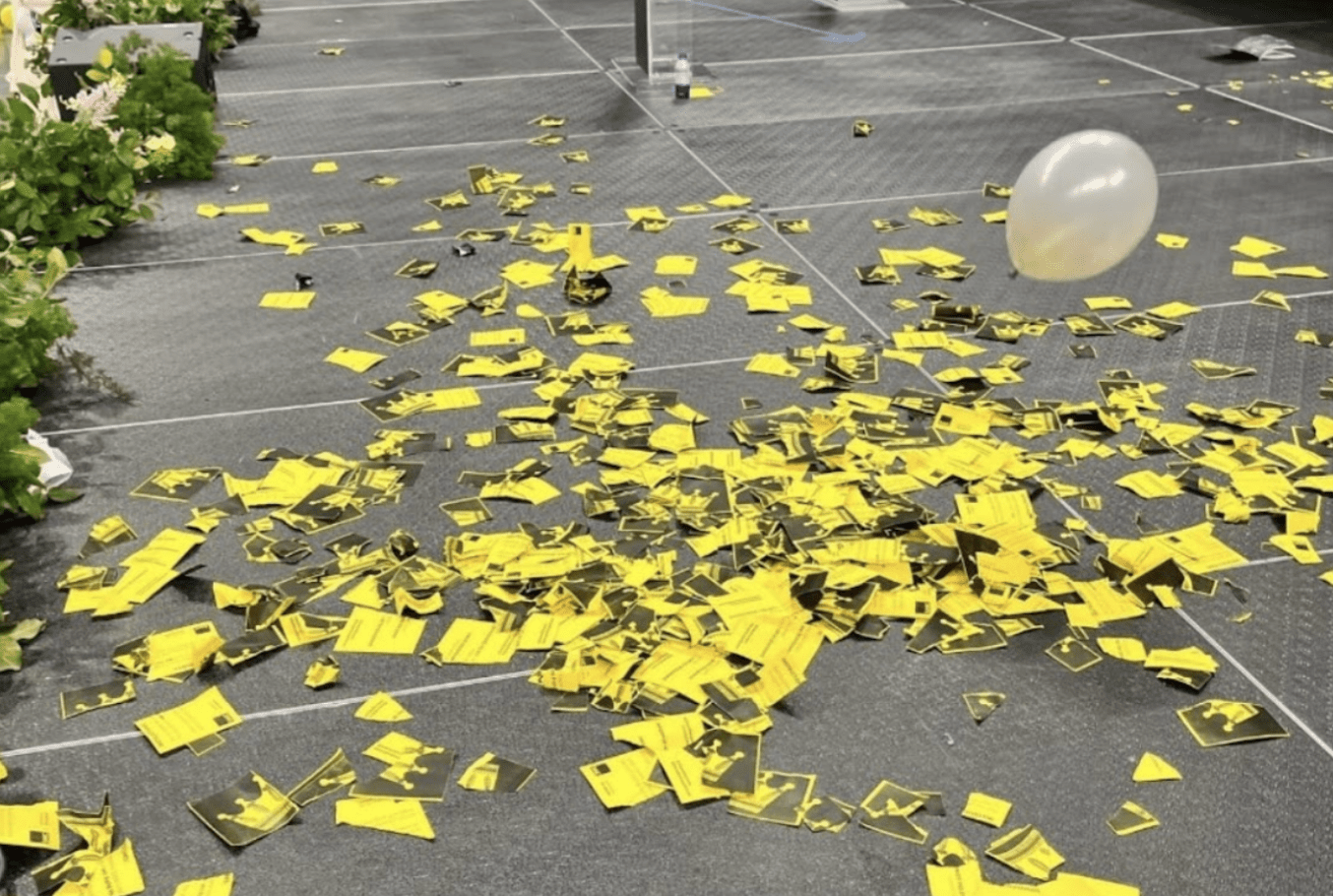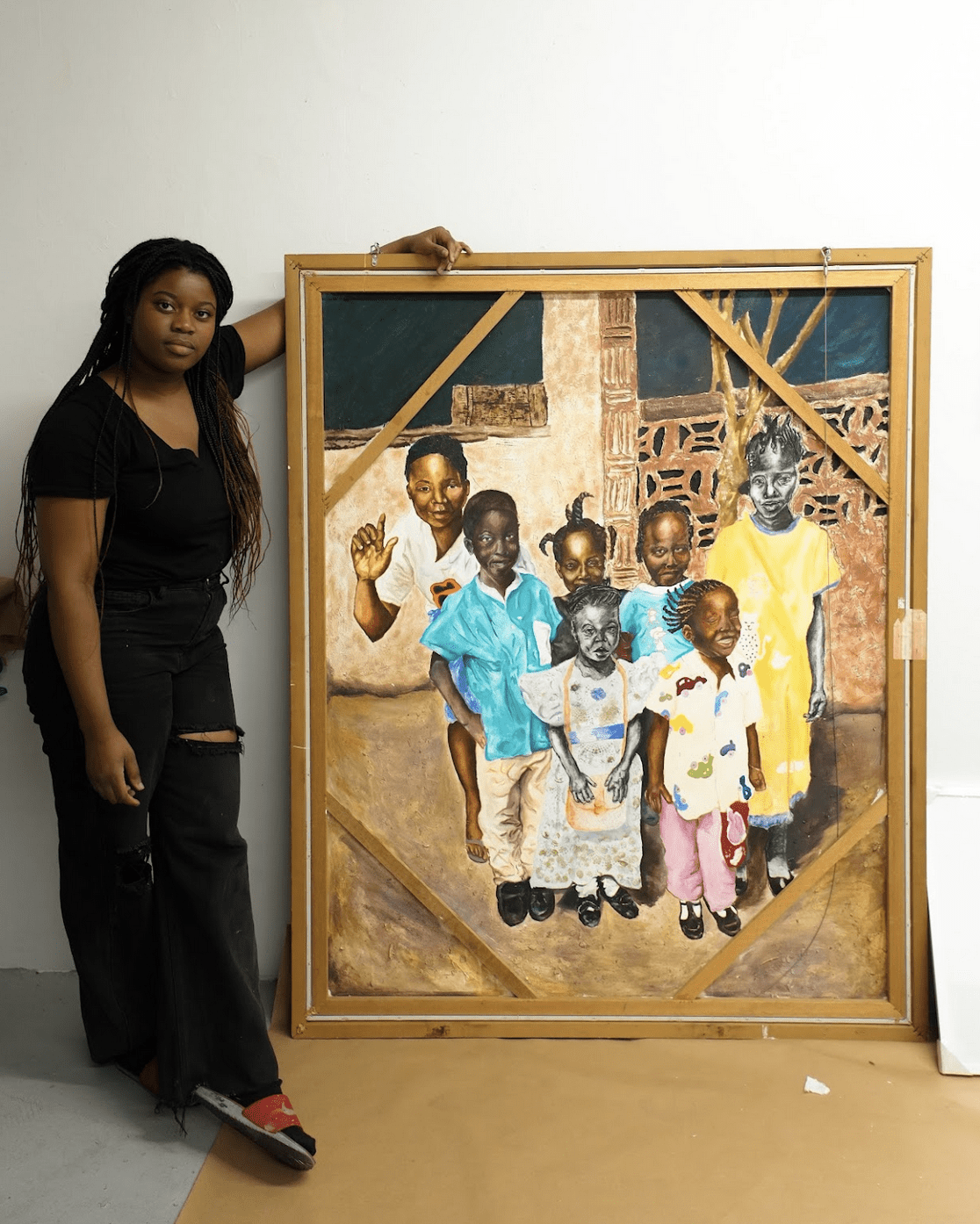
In 1988, on the eve of his graduation, John Flaxman (MFA 1988) wrote a letter that would come to greet students as they entered the library with Flaxman’s name at The School of the Art Institute of Chicago.
His observations have proved timeless, and I’ve been thinking about them a lot.
“If you wish to pass a class at SAIC you will pass,” the letter reads. I can attest: this is still true.
“I am losing my teenage power; a power based on confusion, protest, and outward blame that ultimately turned to inner judgment. An endless cycle. We recreate ourselves again and again in all our tasks,” he writes.
He grapples with perceived corruption and notions of power, stating, “I thought I knew it all. The tale-tell chip on my shoulder ‘Battle not with monsters, lest ye become a monster … and if you gaze into the abyss the abyss gazes also into you. It is my lifelong pursuit to burn out the blackness within me with the bright light of creation.”
The letter ends with the idea that love is the ethic that can address all of these concerns: “Love conquers fear. I suspect love and creation are the same,” he writes.
This ethic of love is still everywhere I look at SAIC.
As a staff writer at F Newsmagazine, I’ve spent a lot of time thinking about SAIC as an institution. This year we’ve written about speaking truth to power, the war in Palestine, our hopes for a new school president, and the Diversity, Equity, and Inclusion initiatives the school has put forth.
Now that I’m preparing to graduate, I wanted to reflect on how things have changed or stayed the same since we initially published some of these articles, and what it all means for the future.
In “So Do You Wanna Collaborate” (Oct. 2023), we discussed how no individual can solve the multiple crises in society alone. No one artist can truly create structural change solely from without. Collective change needs to be consistently located within institutions in American society.
Prior to my arrival at SAIC, students advocated for significant structural changes including change in the administration, change in demographics of the student body, change in the physical spaces.
In “Entering a New Era” (Nov. 2023), we explained how the school’s power structure is such that student protest drives creation and the office of the president is responsive. The school structure is such that any student-led initiative will always be short-lived because our lives as students are ephemeral. We graduate before we see what our actions have brought to this institution.
Collective change is consistently the role of institutions in American society and yet, SAIC as an institution has not always been helpful in fostering a collaborative environment. In “Anti Racism Committee: Political Theater or True Commitment to DEI?” (March 2024), we examined steps the school has taken and still needs to take to meet the varying needs of all the school’s stakeholders.
The office of the outgoing president, Elissa Tenny, responded by stating, “The work of making SAIC more diverse, equitable, inclusive, and anti-racist will continue, and it will rely on responsive, collaborative work across the institution, rather than follow a particular, pre-existing template.”
With this in mind, I spoke to Dr. Sekile Nzinga to understand how her office would approach the task.
Nzinga said that she believes in structural change and intends to build in three key areas: co-curricular, structural, and academic.
“I inherited the initiative that President Tenny started. I am excited to have an opportunity for us to connect and engage further. Reading about race and racism gives us a space to develop a shared understanding and shared analysis, and it can give us a chance to build community,” Nzinga said.
She said that she believes engagement and action can take place across all kinds of identities and experiences.
“I love a common read concept [where the school community reads a single foundational text together] and I plan on building on this initiative next year. I plan on working with the Office of Student Affairs so the common read becomes a part of our students’ welcoming experience. Especially given that our students are coming from so many places — we have 85 countries represented at SAIC,” she said.
Book clubs and study groups provide an opportunity to discuss critical work, Nzinga said. She wants to incorporate the common read into the school’s curriculum.
“Common connection is an important part of community building,” Nzinga said.
Students’ demands for change go beyond our campus: protest and organizing around the ongoing wars in Sudan, Ukraine, and Palestine require response from leadership. We discussed that in “Students Affected by Genocide Need All of Us” (April 2024), which demanded more resources in the face of worldwide devastation.
Everyone at SAIC works for each other — there is no one that attends the school who is not served by their fellow students and alumni. But we, too, will fade as the next group comes to make their mark. In this way, our protest is a part of a repeated cycle. If we don’t recognize this, we risk the danger of recreating the conditions that we criticize.
Nzinga said she has an open door to help address student concerns and wants to work as a partner.=
“I have some broad institution-wide goals. I am pleased that the SAIC community fought to have my office report to the president, which allows me to partner with other across the school
— in academic affairs, in the school’s operations and in the co-curricular experience. Each is important to bring about institutional change,” Nzinga said.
The truth is that nothing is pure in this world. In the same way that Flaxman recognized his life-long pursuit to rid the “blackness with the light of creation,” we as artists pursue what is sublime and beautiful. This need for utopia leads us in circles — the Latin to English-translation of “utopia” is, “The good place exists nowhere.”
We live in an imperfect world and we ourselves are imperfect beings. We will always live within contradictions.
One such contradiction present in the face of working in a museum is the wealth and the theft that created such an institution, to begin with, as explained in the article “Gatekeepers of Heritage,” published in October 2023. The museum is eager to catalog the protest once it is over, but it does not actively engage in the conflict as it occurs.
The money of the institution is implicated in the funding that creates instruments of war. The artifacts that are on display are there as a result of sordid acts. Often, I hear passing comments from international students regarding the contradictions that create the place we all occupy. There’s a kind of contemptuous glee in declaring that Americans are unaware of how corrupt they are.
I counter such statements with this: everyone is aware, but a neat and perfect answer has not been found. We can only find beauty if we accept that nothing is beautiful and instead find joy in the process. This is called growth; it is called democracy; it is called compromise.
The work of finding compromise is only for those who are willing to grow. In the age of the internet and Artificial Intelligence, it is easy to critique from a comfortable distance, but socially engaged art is about action and documentation. Every step taken to solve one piece of a tangled web is a step that will help you grow and in turn will help others grow as well.
Nzinga said she believes that her role is to support students, faculty, staff, and the administration as we grow as an institution.
“I am also here to remind us that we deserve to live, to rest, and that we deserve joy,” she said.
But even after all of SAIC’s efforts to advance DEI, I find I can still walk into a room and be the only one — the only Black person, the only woman, or the only mother in the room. These systems of exclusion are still in place — they are baked into our cultural institutions.
I’m curious to explore how we can be a part of a collective effort to name and remove barriers so that all of those folks who are underrepresented in higher education can thrive. Many institutions have made commitments to advancing DEI and I see them as accountability partners. Whether you are a student or in administration — we are on the same journey.







